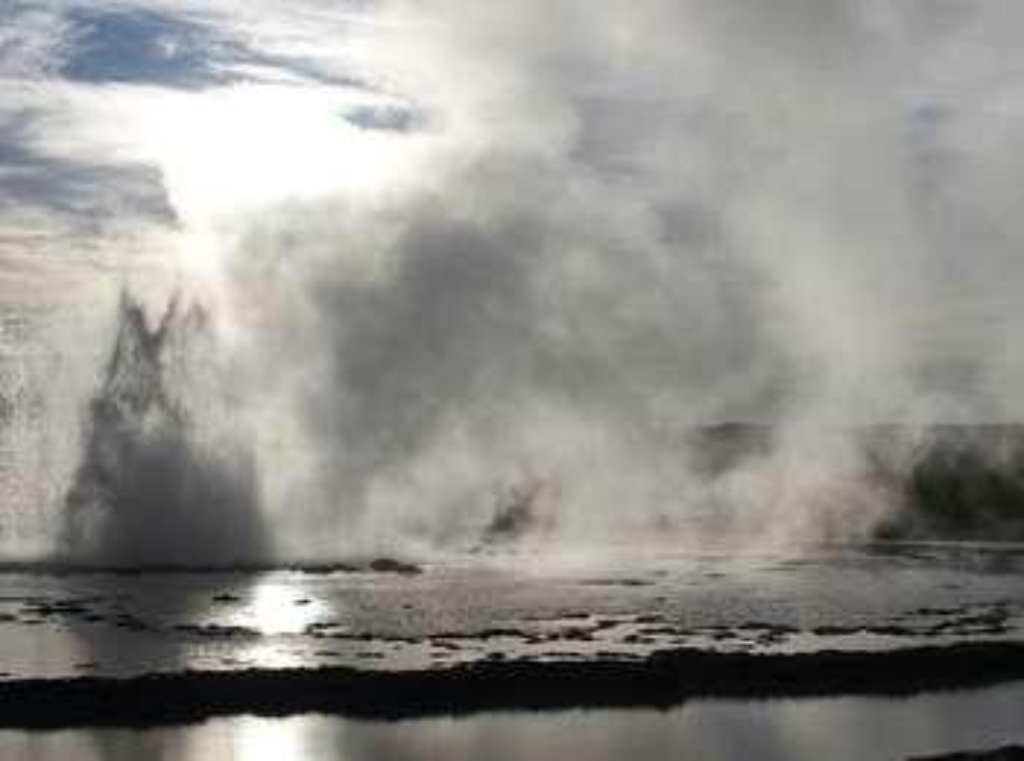
Eruptions average 100 feet (31 m) high, with some rare “superbursts” of 200 feet (61 m) or more. Eruptions last 45-60 minutes in a series of bursts. Great Fountain Geyser takes 10-14 hours to rebuild to an eruption. The pool slowly fills, then begins to overflow 70-100 minutes before the eruption.
Like most geysers, Great Fountain Geyser experiences periods of irregularity. For the most part, it is dependable. While waiting for its display, watch for the eruptions of White Dome Geyser.
Lower Geyser Basin
The Lower Geyser Basin sits on unstable glacial gravel on top of solid rock. The jarring energy of an earthquake can make the gravel vibrate and shift position, and compact or fracture.
All these changes affect water supplies to hot springs. They might force muddy water to the surface, clouding existing pools or creating new ones. They might divert water from a pool, causing it to dry up. Water temperatures might also increase or decrease due to these subsurface changes.
In the days after the Hebgen Lake earthquake of 1959, all of these changes were observed in various springs of the Firehole River geyser basins. The epicenter (point of origin) of the quake was determined to be about 31 air miles (50 km) northwest of the Fountain Paint Pots area.
Geysers
Geysers have constrictions in their plumbing systems that prevent water from moving freely to the surface where heat would escape. Water beneath the constrictions creates a buildup of steam. Eventually the steam pushes water past the constrictions and the geyser erupts.
Use Caution in Hydrothermal Areas
- Stay on boardwalks and designated trails.
- Hydrothermal water can severely burn you.
- Never run, push, or shove.
- Supervise children at all times.
- Do not scratch hydrothermal mats.
You are responsible for your safety.
Think safety, act safely. Yellowstone is a dangerous place.
Is there something we missed for this itinerary?
Itineraries across USA


















































